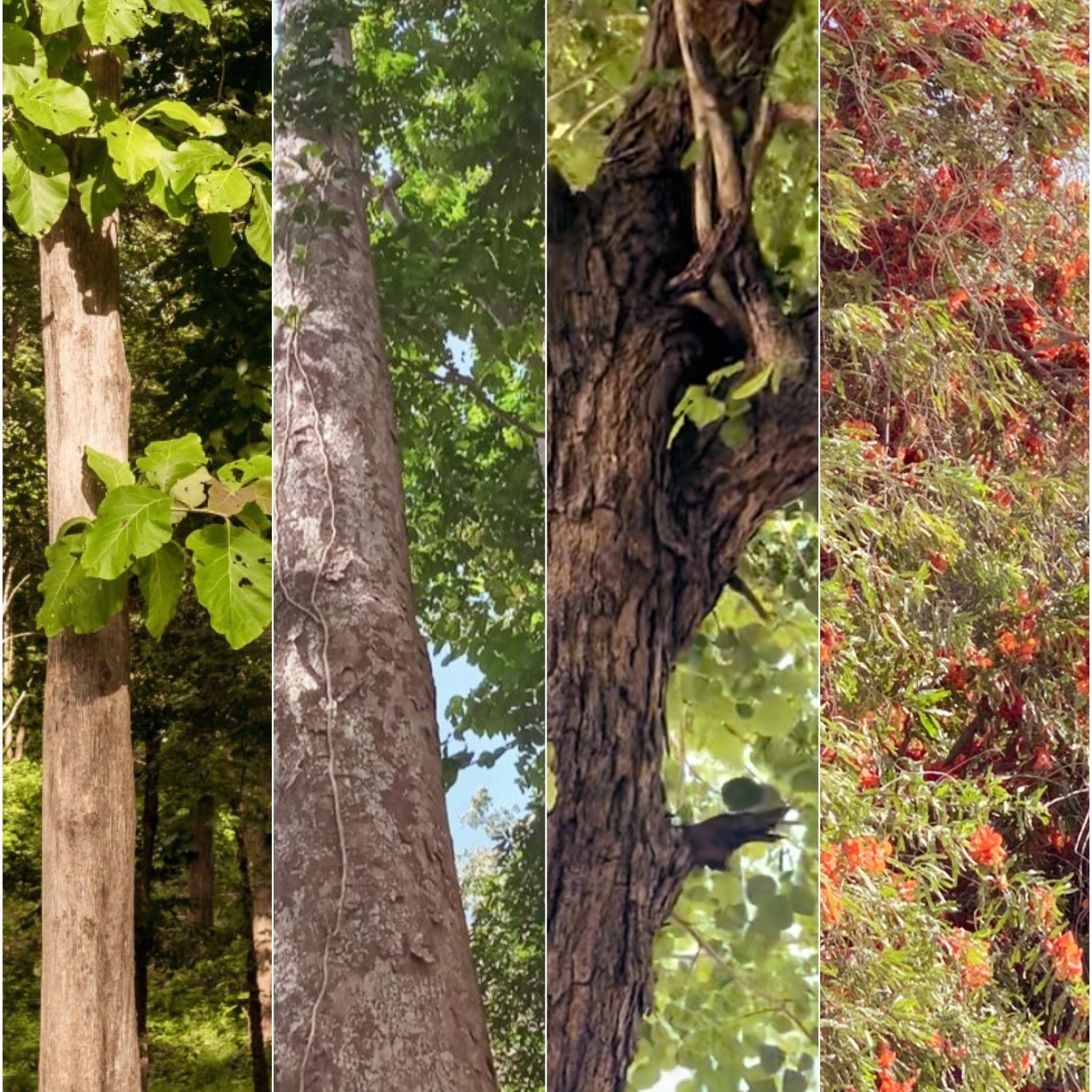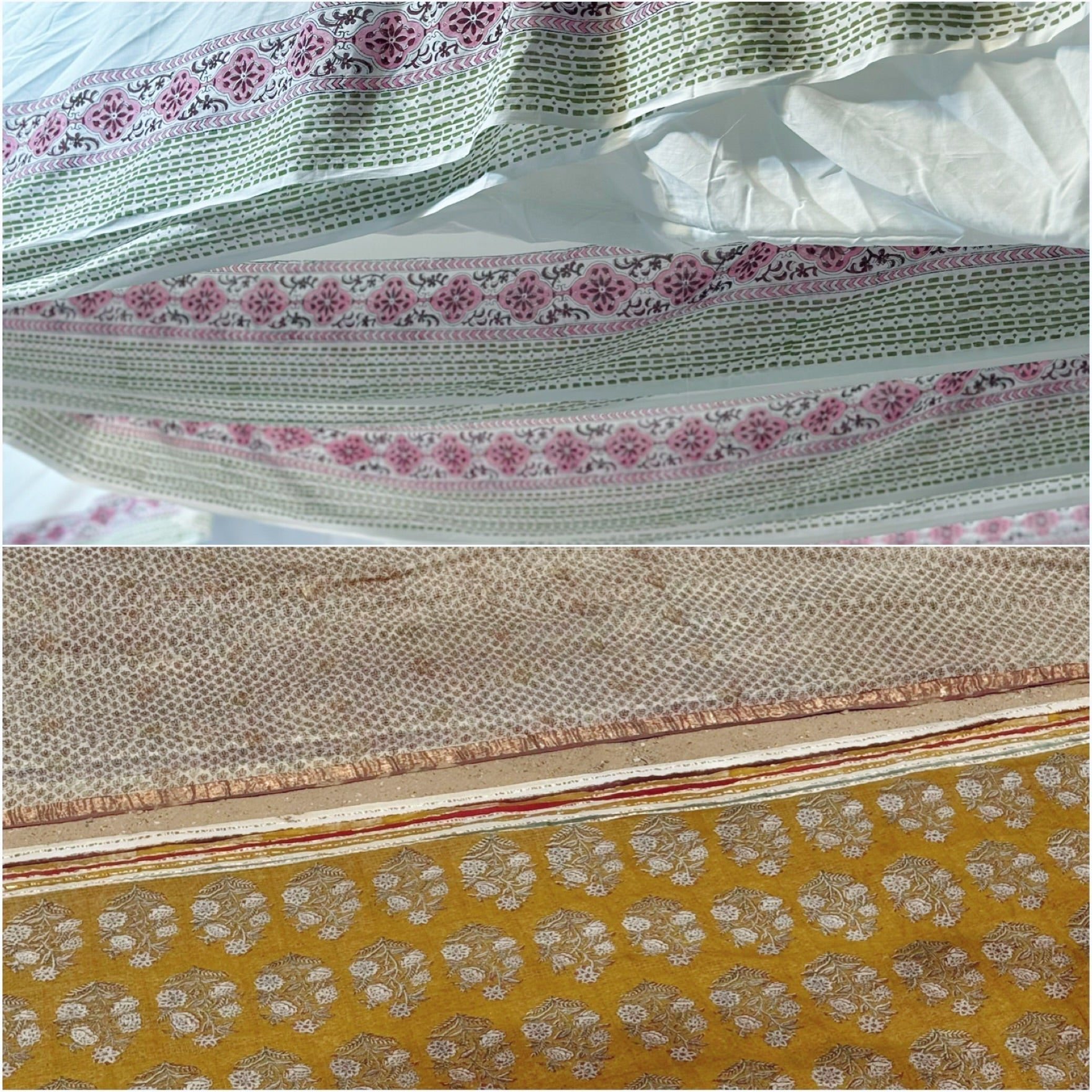
The Trees That See Us Through: Carving Time Into Print
A tribute to the woods that shape our craft and carry our stories.
Types of Wood Used in Hand Block Printing in Jaipur
Understanding the foundation behind every print begins with the wood beneath the artisan’s hand.
The art of hand block printing is not only about motifs and dye—but equally about the tools. And the most critical tool is the wooden block—“bunta” in local parlance. A finely carved block can last decades and is revered by artisans as both a tool and a talisman. The choice of wood plays a vital role in ensuring the quality, precision, and longevity of the block.
1. Teak Wood – “Sagwan” (सागवान)

-
Local Name: Sagwan
-
Botanical Name: Tectona grandis
-
Properties:
-
Known for its natural water resistance, high density, and durability.
-
Its tight and straight grain allows for fine carving, making it ideal for detailed Sanganeri-style floral and jaali motifs.
-
It withstands repeated soaking in dye without warping or cracking.
-
Its slightly oily nature also helps prevent fungal decay.
-
-
Use in Printing:
-
Considered the gold standard for block carving in Jaipur.
-
Preferred by traditional block carvers and senior artisans for long-lasting use.
-
“Sagwan ka block ek daur ka sathi hota hai”—A teakwood block is a companion for an era.
2. Gurjan Wood – “Gurjan” (गुरजन)

-
Local Name: Gurjan
-
Botanical Name: dipterocarpus turbinatus
-
Properties:
-
Very hard, very heavy, and extremely durable.
-
Provides a clean surface for bold, deep carving, often used for larger motif blocks.
-
Due to its density, it resists cracking and gives precise impressions.
-
-
Limitations:
-
Highly expensive and now regulated/banned in many regions due to conservation efforts.
-
Difficult to carve for finer detailing.
-
-
Current Status:
-
Mostly discontinued in responsible artisan communities.
-
Antique blocks made of Gurjan are still in circulation and revered.
-
3. Indian Rosewood – “Sheesham” (शीशम)

-
Local Name: Sheesham
-
Botanical Name: Dalbergia sissoo
-
Properties:
-
Medium hardness, smooth texture, and easy to carve.
-
Often used as a more accessible and affordable alternative to teak.
-
Not as water-resistant as teak, but works well with bold patterns and geometric motifs.
-
-
Use in Printing:
-
Ideal for large surface designs, border blocks, and abstract prints.
-
Requires proper seasoning to avoid cracking when exposed to repeated moisture.
-
4. Rohida Wood – “Rohida” / “Desert Teak” (रोहिड़ा / तेजा)

-
Local Name: Rohida or Teja
-
Botanical Name: Tecomella undulata
-
Properties:
-
Indigenous to Rajasthan, especially the arid Marwar region.
-
Medium-weight wood with a distinct reddish-brown hue.
-
Revered in local folklore and considered sacred by some communities.
-
Used for simpler or regionally traditional motifs—not as fine-grained as teak.
-
-
Ecological Note:
-
Its use reflects local resource adaptation—using what grows near, sustaining what lives far.
-
Why Wood Choice Matters
The wood chosen for block making impacts:
-
Durability of the block
-
Sharpness and finesse of the print
-
Resistance to moisture and dye corrosion
-
Weight and handling during printing
In Jaipur, the Kharadiya community, skilled in wood carving, still works with hand tools—chisels, hammers, and gouges—to craft intricate blocks from these woods. Most families still season the wood for up to 6–12 months before carving to prevent warping.
Conclusion: Wood as a Silent Collaborator
In the heritage clusters of Rajasthan, every printed fabric carries the invisible imprint of the tree it came from. The block is not just an instrument—it is a collaborator in the craft, shaped by age-old knowledge and reverence for nature.
At Parvai, we are deeply mindful of the choices artisans make—whether it’s the motifs they carve or the trees they honour. As patrons, when we value the story behind a print, we also honour the forests, hands, and histories that made it possible.



1 comment
great article, thanks for sharing how the right raw materials plays a big role in making block prints, as a buyer we always see the end products but there goes a lot to get the right ones. This is very interesting and informative
vidhya
Leave a comment
This site is protected by hCaptcha and the hCaptcha Privacy Policy and Terms of Service apply.